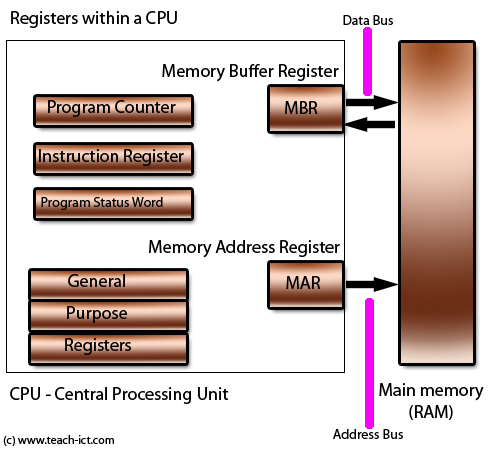 A LEVEL COMPUTING
A LEVEL COMPUTING Architecture
Architecture Theory
Theory
2. Registers
Low level languages make direct use of the hardware within the CPU. This means the programmer needs to know a lot about the internal structure of the CPU in order to write low level code.
In particular, they to know about the registers within the CPU

A register is a discrete memory location within the CPU designed to hold temporary data and instructions
A modern CPU will has many internal registers. They include a number of general purpose registers that the programmer can use to hold intermediate results whilst working through a calculation or algorithm.
Then there are special-purpose registers designed to carry out a specific role. Each of these registers are given a name so that the programmer can write their software code to access them. Different manufacturers of CPU chips call them by different names (which makes life interesting for a professional programmer!)
Registers change value under the command of the currently running program and they do so with every tick of the system clock as shown below.
Challenge see if you can find out one extra fact on this topic that we haven't already told you
Click on this link: Modular programming methods
Copyright © www.teach-ict.com

